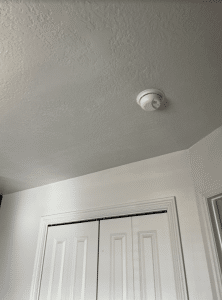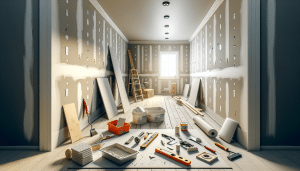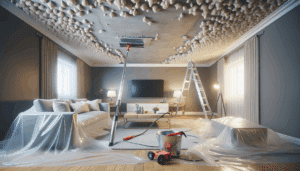Drywall is a common building material used to create smooth and seamless interior surfaces. However, it’s not immune to wear and tear. Whether you’re dealing with minor dents, holes, or more significant damage, knowing the dos and don’ts of drywall repair is crucial. In this guide, brought to you by Utah Drywall and Repair, we’ll provide expert advice on how to effectively repair drywall, avoid common pitfalls, and ensure a flawless finish.
Drywall damage is a common issue in homes and offices. Whether it’s due to accidental impacts, holes from hanging pictures, or wear and tear over time, knowing how to repair drywall correctly can save you time and money.
Contents
Essential Tools and Materials
Before you begin any drywall repair project, gather the following tools and materials:
- Joint compound
- Putty knife
- Sanding block or sandpaper
- Drywall patch
- Utility knife
- Drywall tape (if needed)
- Primer
- Paint
Dos of Drywall Repair
1. Prepare the Area
- Do: Clear the area of debris and dust before starting. Clean surfaces ensure a better bond between the patch and existing drywall.
2. Use the Right Patching Material
- Do: Choose the appropriate patching material, such as joint compound or patching plaster, based on the size and type of damage.
3. Apply Thin Layers
- Do: Apply thin, even layers of joint compound. Multiple thin coats are better than one thick coat, as they dry faster and result in a smoother finish.
4. Sand Between Coats
- Do: Sand the patched area lightly between coats to create a smooth surface. Use fine-grit sandpaper or a sanding block.
5. Prime Before Painting
- Do: Apply a primer to the patched area before painting. Primer ensures paint adheres evenly and prevents patches from showing through.
Don’ts of Drywall Repair
1. Rush the Job
- Don’t: Avoid rushing through the repair process. Take your time to ensure each layer of joint compound is dry before applying the next.
2. Overlook Safety Precautions
- Don’t: Neglect safety precautions such as wearing safety goggles, a dust mask, and proper clothing to protect yourself from dust and particles.
3. Ignore Proper Feathering
- Don’t: Neglect feathering the edges of the patch to blend it seamlessly with the surrounding wall. Feathering minimizes the appearance of the repair.
4. Neglect Dust Control
- Don’t: Allow drywall dust to spread throughout your home. Use dust control measures like plastic sheeting and sealing off the repair area.
5. Skip the Primer
- Don’t: Skip the primer step before painting. Primer is essential for achieving consistent color and finish.
Professional Help and Expertise
For more extensive drywall damage or if you’re unsure about the repair process, consider seeking professional help. Drywall repair experts have the knowledge and experience to handle complex repairs efficiently.
Conclusion
Mastering the dos and don’ts of drywall repair is essential for maintaining the appearance and integrity of your interior walls. By following these expert guidelines, you can confidently tackle minor drywall repairs and achieve a flawless finish. For professional drywall repair services and expert advice, contact Utah Drywall and Repair at 801-406-6350 or visit our website drywallrepairutah.com. We’re here to help you keep your walls looking their best.




